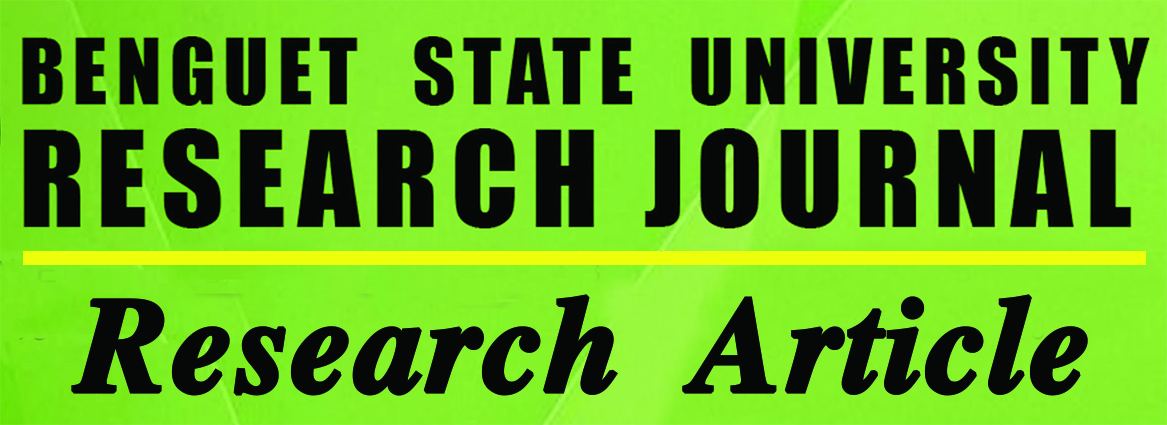In-Situ Morphological Characterization and Diversity Analysis in Traditional Arabica Cultivars in Benguet
Main Article Content
Abstract
The research on Arabica coffee (Coffeaarabica L.) was conducted to characterize the collection along phenology, relationships, and diversity and determine the nature of association among quantitative characters
in Arabica coffee collection.
Collection trips were done in the 13 municipalities of Benguet. During the trips, the Arabica coffee cultivars were characterized in-situ using the coffee descriptor’s list (IPGRI, 2006).The general phenological pattern of existing Arabica coffee cultivars in the different study areas was investigated. Estimate of variability for each qualitative character was computed using the standardized Shannon-Weaver Diversity Index. The Ward’s method was used for clustering the collections.
A total of 152 Arabica coffee accessions were collected in 13 municipalities of Benguet. Most of the Arabica coffee cultivars were found in the low (1,001 to 1,500 m asl) and mid (1,501-2,000 m asl) mountain zones while a few cultivars were observed in the high hills zone (500-1,000 m asl) such as Itogon, Sablan, Tuba and some parts of Bokod. Typica had the highest number of accessions with 53 followed by San Ramon (35), Granica (30), Bourbon (22), Yellow Caturra (4), Kenya (2), Mondo Nuvo (2), San Ramon Selection (2) and Moka (1).
Granica growing in the high hills zones was the earliest to flower at 33 days from flower bud initiation while San Ramon growing in the mid-mountain zones was the latest to flower. Coffee cultivars in the high hills zone were the earliest to flower compared with those cultivars grown in the low mountain and mid- mountain zones.
The mean diversity index for the quantitative characters of the Arabica coffee accessions was 0.18 which indicates low variation. Six clusters resulted in the 152 Arabica coffee collections. The first cluster consists of 55 accessions belonging to the cultivar Typica mostly from Atok and Kibungan. The second cluster (San Ramon) consists of three sub-clusters.The third cluster constitutes two accessions from Mondo Nuvo cultivars collected from Kibungan and Kabayan. Cluster 4 (Granica) consists of 34 accessions and sub-divided into two sub-clusters. Cluster 5 (Red Bourbon) had 23 accessions. Cluster 6 constitutes a lone accession of Moka collected in Atok.

